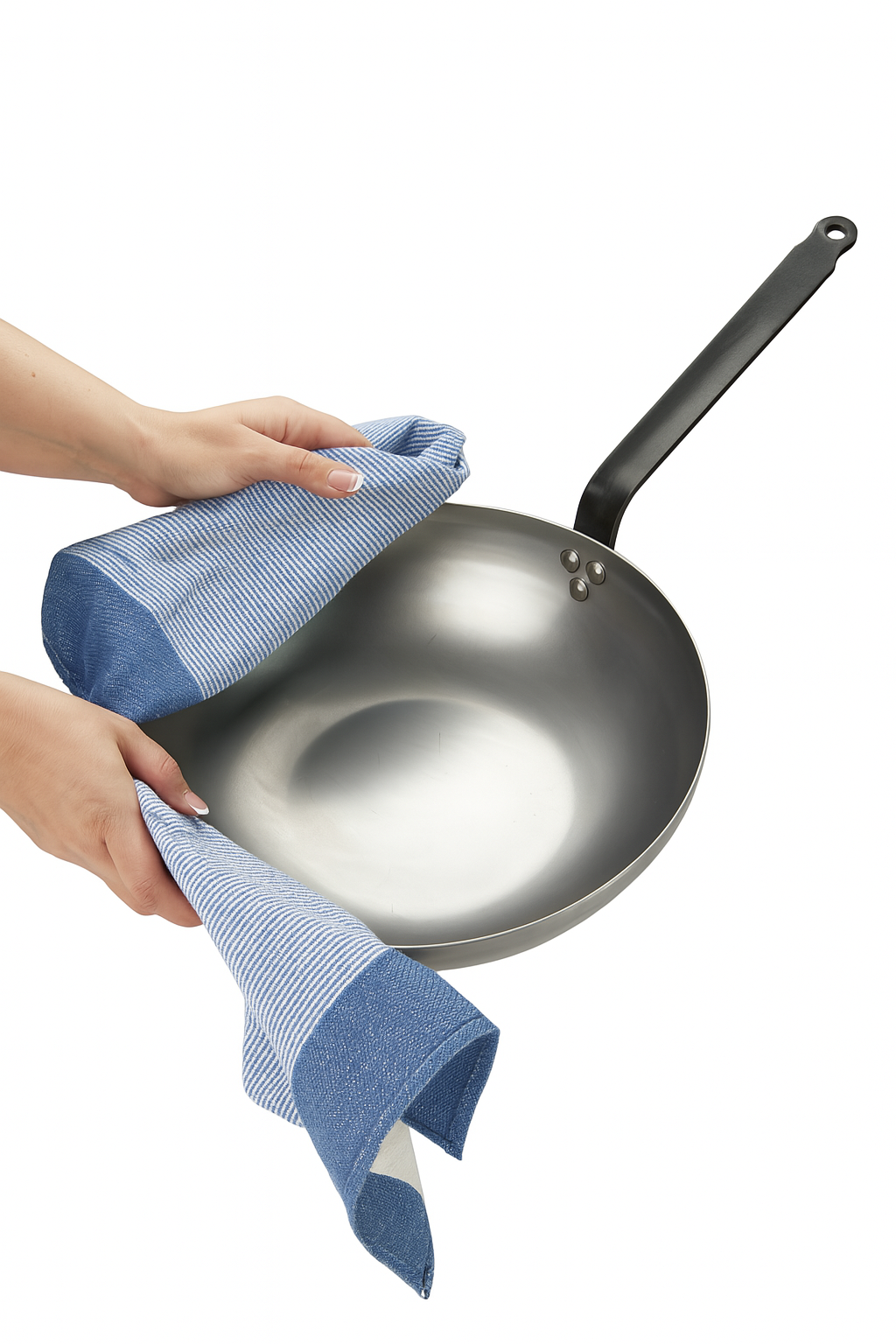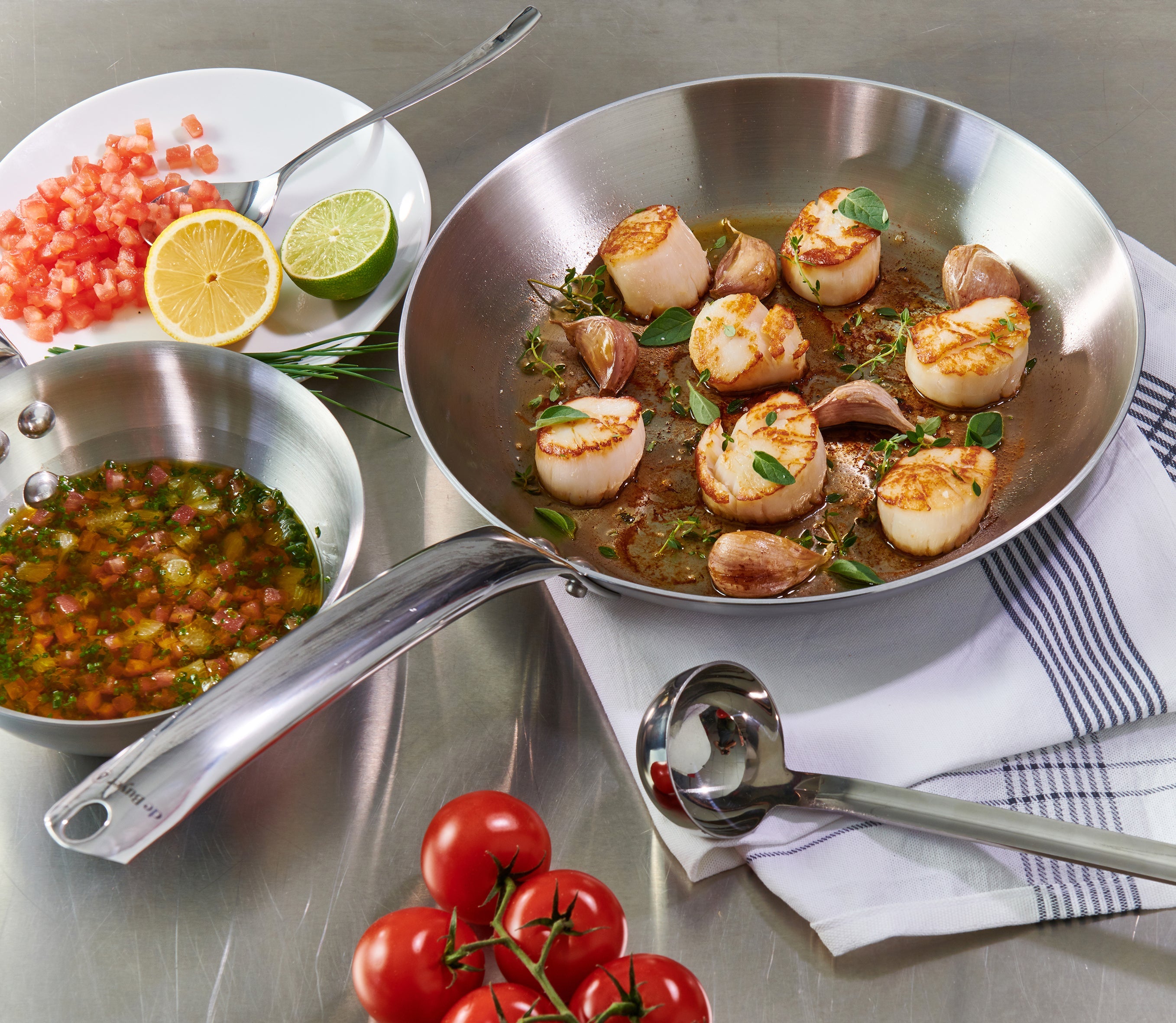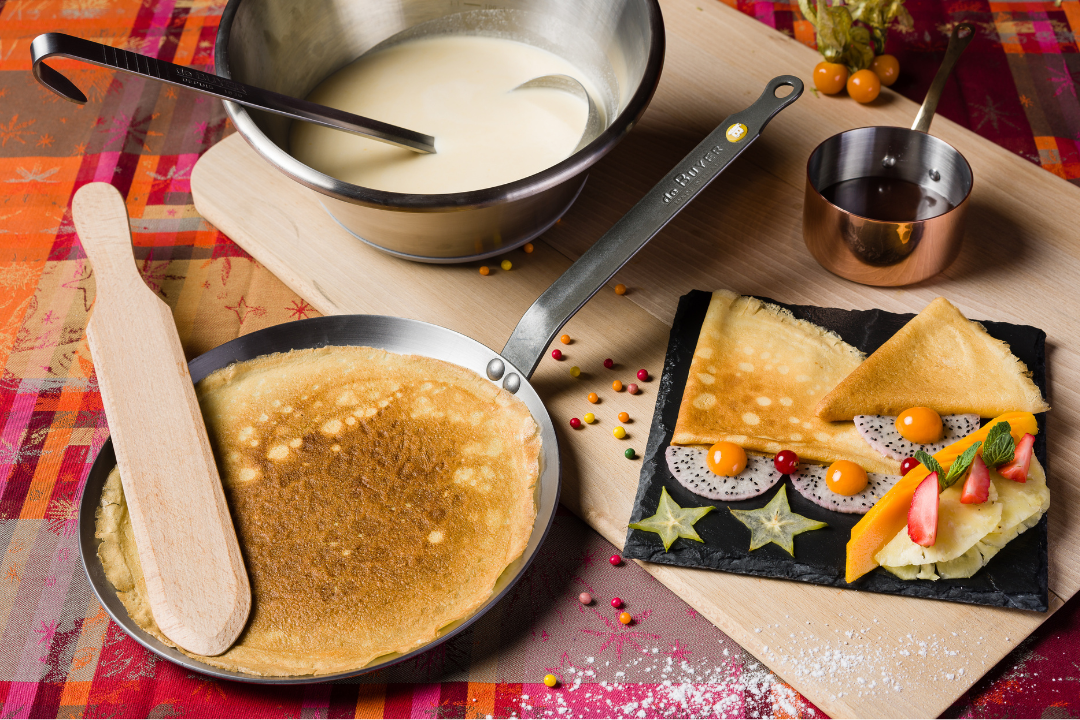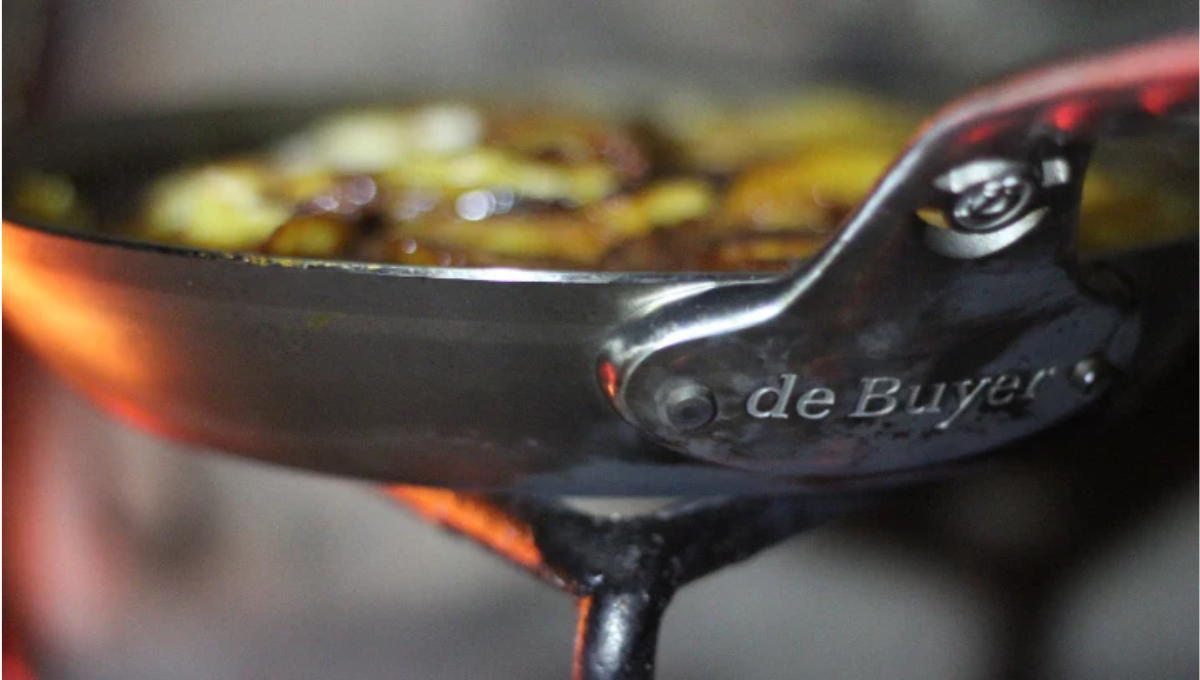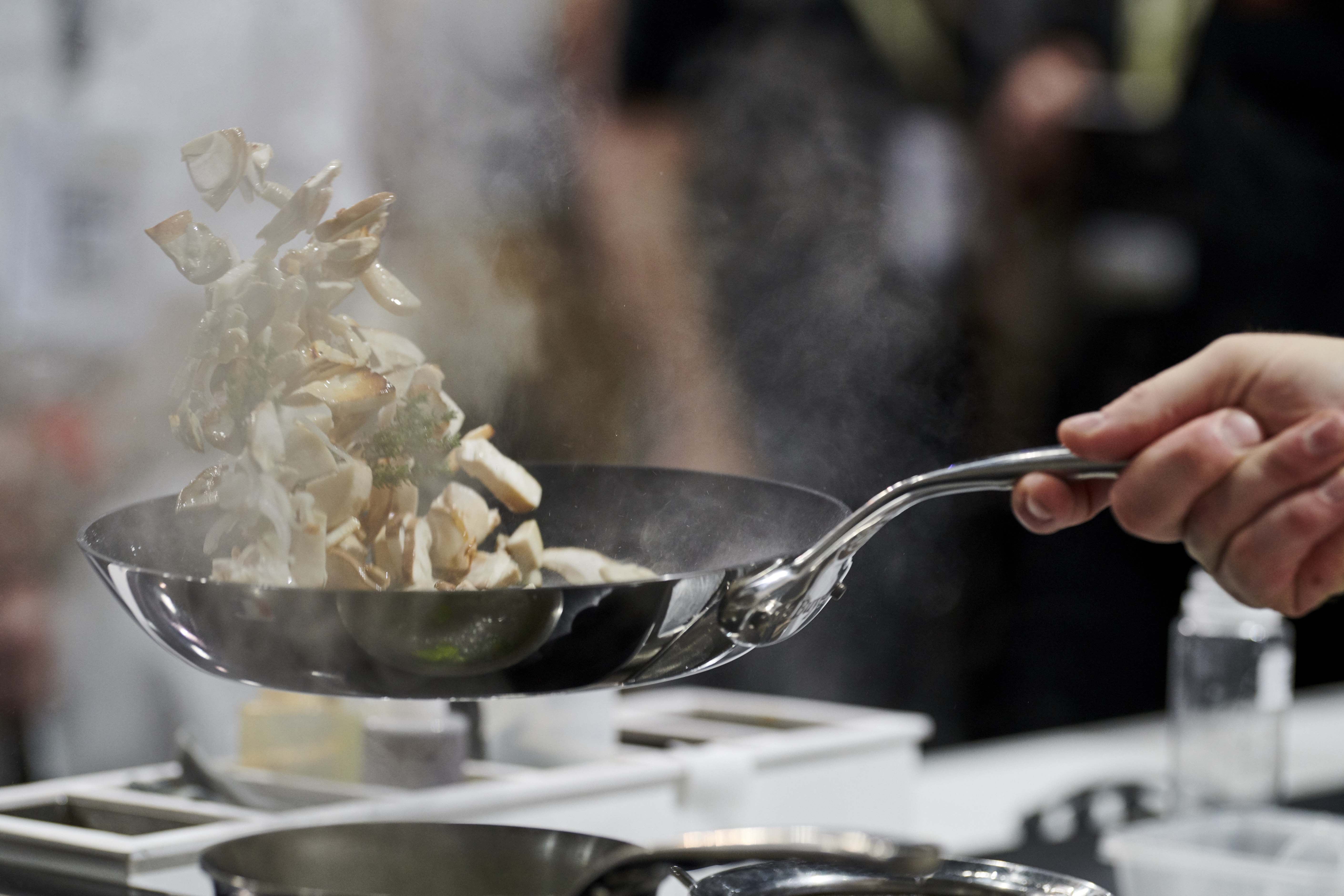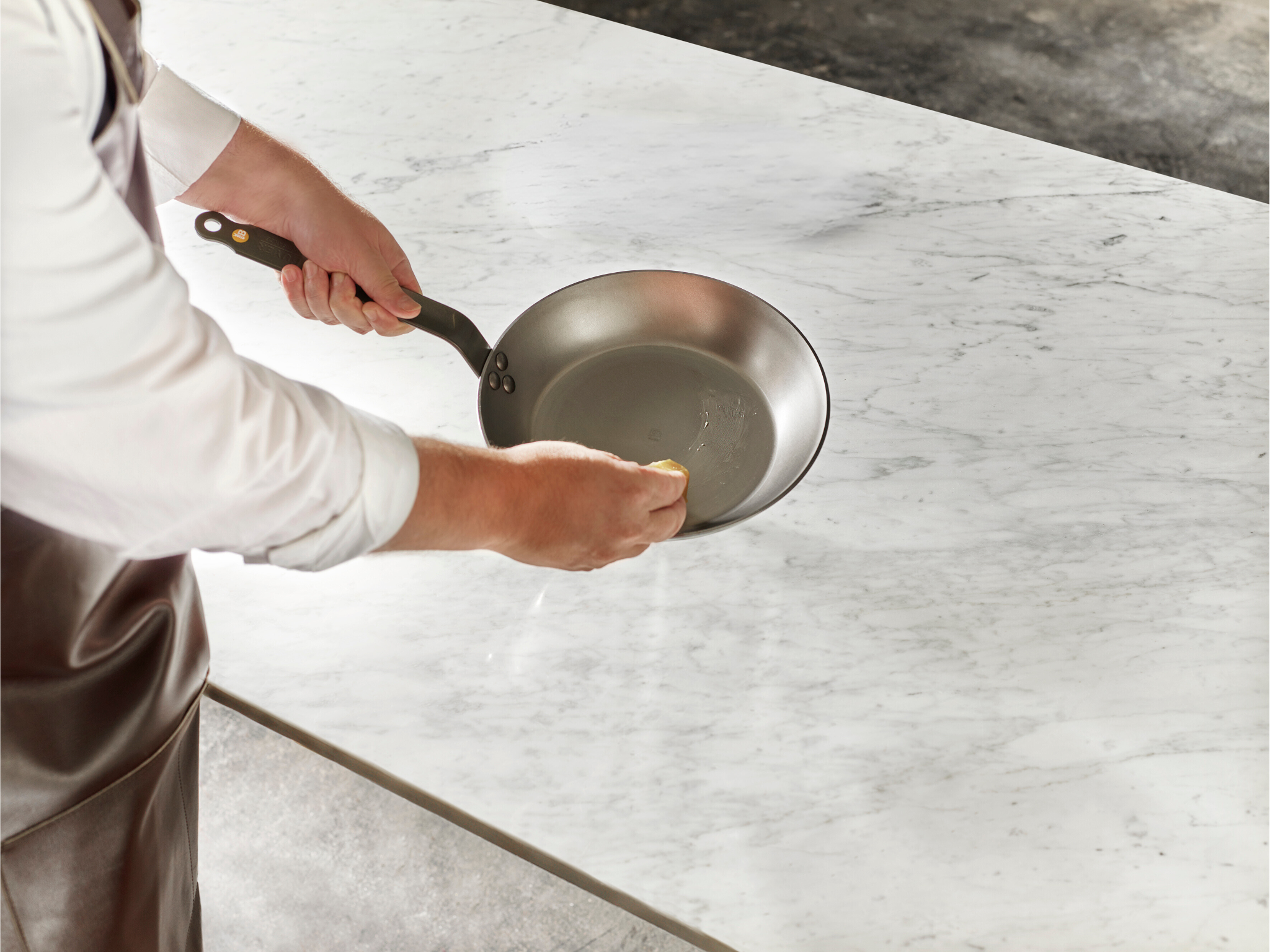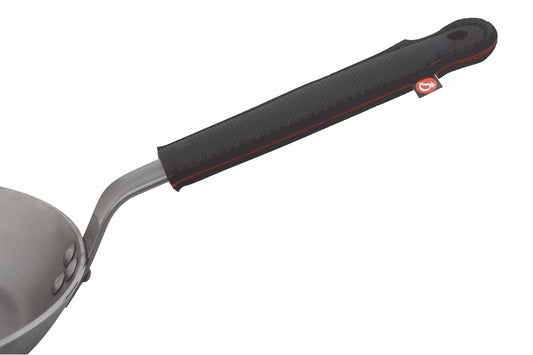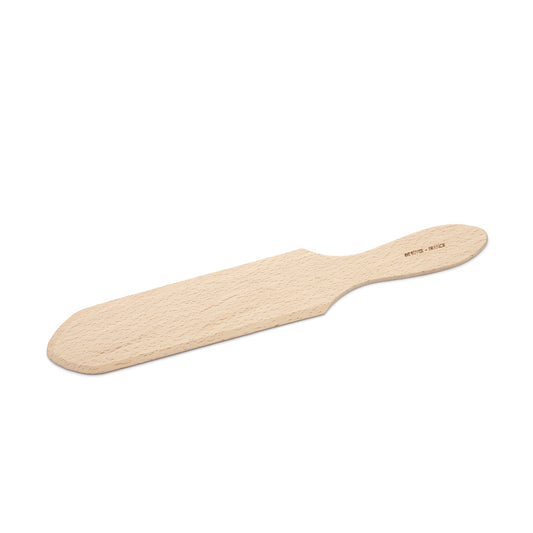How to Use a Wok: Mastering Heat, Toss, and Flavor
Master heat, seasoning, and flavoring with your wok. Learn how to stir-fry, steam, and deep-fry like a pro using expert tips and step-by-step techniques.
de Buyer
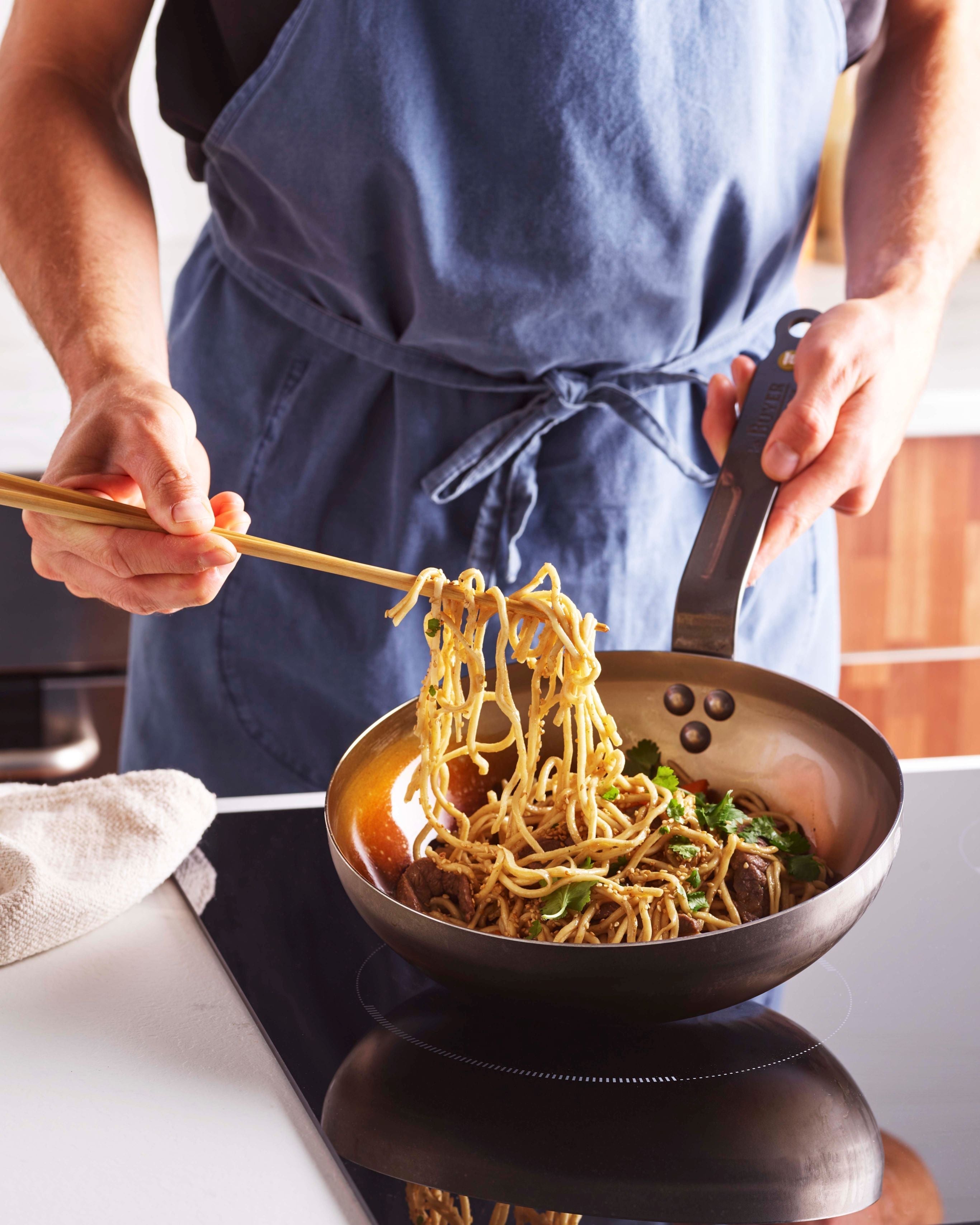
High heat, versatile wok cooking is a vehicle for fantastic fried rice, fragrant Sichuan Dan Dan noodles, and delicious steamed dumplings. A wide breadth of dishes benefit from the speed and flavor achievable with a wok.
This article will provide practical, step-by-step guidance on how to effectively use a wok for various cooking techniques. Learn more with other de Buyer articles, "What is a Wok?" and "Why Use a Wok?" that provide further context.
How to Use a Wok for Delicious Results
Seasoning, heat control, and stir-frying techniques are the foundation of wok cooking.
Preparing Your Wok for Success: Seasoning
Seasoning your wok prevents rust, enhances flavor, and reduces sticking. Any sort of carbon steel or cast iron pan (besides the nonstick varieties) is designed to be seasoned. A seasoned carbon steel wok has a natural nonstick patina that stops foods from getting stuck to the pan and limits the amount of cooking oil you need.
Here’s how to season a new carbon steel or cast iron wok.
- Wash your wok in hot water to remove the protective beeswax coating. Don’t worry if some beeswax remains. It can aid the initial seasoning layer. Dry the wok thoroughly with a towel.
- Place the dry wok on the stove over medium-high heat. Add just enough of your chosen oil to lightly coat the interior. Tilt and rotate the wok to spread the oil evenly over the entire cooking surface.
- Continue heating the wok until the oil begins to smoke—this takes about 10 minutes. As it smokes, the wok’s surface may turn brown or golden. This change is part of the seasoning process. Turn off the heat and let the wok cool completely.
- Once the wok has cooled, carefully drain any remaining oil and wipe the interior with a dry paper towel to remove residue.
- Return the wok to the burner and heat over medium heat for about 2 minutes to evaporate any lingering moisture. Turn off the heat and allow the wok to cool again.
-
Repeat the seasoning process one to three times before your first use. Over time, continued cooking will naturally improve the wok’s nonstick surface and deepen its patina.
It’s best to clean and oil the wok after each use. Avoid using metal utensils on the wok to prevent damaging the seasoning.
The Foundation: Mastering Heat Control
The shape of the wok facilitates varying heat zones. The center of the wok is the hottest part of the pan. This is where you brown meat and crisp vegetables. The sides of the wok are warm but not hot. Chefs move cooked items to the sides of the pan to keep them warm. Think of this like a built-in wok heating pad.
High-heat cooking prevents steaming and promotes searing and proper texture. The goal is to cook food right before the "smoking point." This is the point in the heating process where a high smoke point oil—like peanut oil, vegetable oil, grapeseed oil, or canola oil—begins to smoke and break down. The oil shimmers right before this stage.
It's during the "shimmer point" that you should add ingredients for high-heat cooking. For other cooking methods like deep frying, you should use a food thermometer.
The Art of the Toss: Stir-Frying Like a Pro
Before you even turn on the heat, prep everything. The mise en place mindset is crucial to successful wok cooking. Stir-frying happens quickly, and there’s no time to chop or measure during the cooking process. Cooks must cut proteins and vegetables into uniform pieces beforehand for even cooking. In order to cook in a wok, you must also pre-mix sauces and set them to the side, ready to pour.
Add ingredients based on (a) how long they take to cook and (b) the proper order to build flavor. Start with aromatics like garlic, ginger, and scallions to build taste. Then add proteins, letting them brown in the center of the wok. Next come vegetables, beginning with the firmer ones like carrots and bell peppers. Save sauces and quick-cooking greens for last.
Depending on the size of the wok, you may need to cook in batches. Too many ingredients in the pan may cause the temperature to drop, leading to steaming instead of searing.
The Tossing Technique
Proper tossing distributes heat and keeps food from burning. Hold the wok handle firmly and use a forward-and-up wrist flick to keep the ingredients moving. A non-metal wok spatula or ladle can help scoop and fold ingredients without damaging the seasoning. To cook properly is to cook quickly with constant tossing.
The tossing technique is the same for a round and flat-bottomed wok. The only exception is that when cooking on any glass-topped stove, the forward-and-up wrist flick technique may damage the stovetop. Use the spatula instead.
Beyond Stir-Fry: Exploring Other Wok Techniques
Stir-frying may be the wok’s traditional cooking method, but it’s far from its only method. This versatile pan can deep-fry, braise, simmer, and steam.
Steaming in a Wok
Dumplings, leafy greens, and delicate fish benefit from the gentle heat of wok steaming. Add water to the bottom of your wok to steam, and place a bamboo steamer or metal rack above it. Make sure the water level stays below the rack and raise it to medium-high heat. You need your water to reach a gentle boil (around 212°F).
Deep-frying in a Wok
The wok’s wide, sloping sides help contain oil splatter and provide excellent temperature control. As mentioned, you need to use your thermometer to maintain consistent oil temperature (typically 350°F–375°F). Fry in small batches to avoid dropping the heat below 350°F. Fry-able wok dishes include:
- Tempura shrimp
- Fried tofu cubes
- Pork belly slices
- Tempura vegetables
- Fried eggplant slices
- Crab rangoon
Braising and Simmering in a Wok
The wok’s depth and curved sides make it well-suited for simmering broths or braising meats. Brown your protein in the center, deglaze with liquid, and let the ingredients simmer gently in the hot wok. Think of wok recipes like braised pork belly, beef short ribs, or noodle soups. This rapid cooking style requires a careful eye. Simmering for too long results in tough, inedible foods.
Putting It All Together: Example Recipes
These beginner-friendly recipes walk you through each technique. Grab your well-seasoned wok, and let's get to work.
Classic Vegetable Stir-Fry
Pull out your carbon or stainless steel wok and start cooking.
Ingredients
- 2 tablespoons vegetable oil
- 2 garlic cloves, minced
- 1 tablespoon fresh ginger, grated
- 1 block firm tofu, pressed and cubed
- 1 cup sliced carrots
- 1 cup broccoli florets
- 2 cups baby spinach
- 3 tablespoons soy sauce
- 1 tablespoon rice vinegar
- 1 teaspoon sesame oil (optional)
- Steamed rice for serving
Instructions
- Heat your seasoned wok over high heat until it shimmers.
- Add oil, then quickly stir in garlic and ginger. Sauté for 30 seconds until fragrant.
- Add tofu cubes and cook until golden brown on all sides, about 3 to 4 minutes.
- Toss in carrots and broccoli. Stir-fry for 2 to 3 minutes until slightly tender but still crisp.
- Add spinach and stir just until wilted.
- Pour in soy sauce, rice vinegar, and sesame oil if using. Toss to coat everything evenly.
- Serve hot over steamed rice.
Basic Wok-Steamed Dumplings
Add this simple recipe to your everyday cooking routine.
Ingredients
- 10–12 fresh or frozen dumplings (store-bought or homemade)
- Water (2 to 3 cups, depending on wok size)
- Perforated parchment paper or cabbage leaves (to line the steamer)
- Dipping sauce (soy sauce, vinegar, chili oil, optional)
Equipment
- Wok (carbon steel or cast iron preferred)
- Bamboo steamer or low-profile metal steaming rack
- Lid that fits snugly over the wok
- Optional: hot dish steamer tongs for plate handling
Instructions
- If using a bamboo steamer, line the base with parchment paper (pierced to allow steam) or cabbage leaves to prevent sticking. If using a steaming rack, place dumplings on a heatproof plate and set aside.
- Pour 2 to 3 cups of water into your wok, making sure it doesn’t touch the bottom of the steamer or rack. For bamboo steamers, water should rise halfway to the steamer’s bottom.
- Place the wok over high heat and bring the water to a rolling boil. Once boiling, reduce to medium-high to maintain a steady flow of steam. This allows the dumplings to cook evenly.
- Place your steamer or rack with dumplings into the wok. Cover with a tight-fitting lid.
- Steam for 10 to 12 minutes (fresh) or up to 15 minutes (frozen) until dumplings are cooked through and translucent.
- Midway through cooking, check that the water hasn't evaporated. Carefully lift the steamer to peek underneath and top up with hot water if needed.
- Carefully remove the steamer or plate using tongs or oven mitts. Let cool slightly, then serve dumplings hot with dipping sauce.
Your Journey to Deliciousness Begins Now
Mastering your wok is about more than technique. It’s about confidence. Each step—from seasoning your pan to managing heat to perfecting your toss—expands your wok cooking ability. Experiment with ingredients/methods, and let your creativity take center stage.
At de Buyer, we know that the right tool and knowledge empower every cook to explore bold and delicious possibilities.
Learn More
Recommended for You
-
MINERAL B PRO Carbon Steel Fry Pan
Regular price $100.00Regular priceUnit price / per$0.00Sale price $100.00 -
MINERAL B Classic Carbon Steel Fry Pan
Regular price $65.00Regular priceUnit price / per -
MINERAL B Carbon Steel Omelette Pan
Regular price $75.00Regular priceUnit price / per -
MINERAL B PRO Carbon Steel Omelette Pan
Regular price $120.00Regular priceUnit price / per -
Protective Sleeve for Pan Handle
Regular price $9.95Regular priceUnit price / per -
MINERAL B Carbon Steel Crepe & Tortilla Pan
Regular price $65.00Regular priceUnit price / per -
Blue Carbon Steel Fry Pan
Regular price $50.00Regular priceUnit price / per -
Blue Carbon Steel Crepe & Tortilla Pan
Regular price $25.00Regular priceUnit price / per -
MINERAL B Carbon Steel Country Fry Pan
Regular price $110.00Regular priceUnit price / per -
MINERAL B Carbon Steel Egg & Pancake Pan
Regular price $40.00Regular priceUnit price / per -
Blue Carbon Steel Rectangular Baking Sheet
Regular price $40.00Regular priceUnit price / per -
B BOIS Crepe Spatula
Regular price $8.00Regular priceUnit price / per
